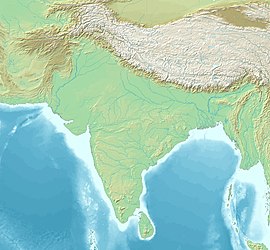Gandhara
Gandhāra गन्धार (Sanskrit) | |||||||||
|---|---|---|---|---|---|---|---|---|---|
| c. 800 BCE–c. 500 CE | |||||||||
 Gandhara Location of Gandhāra in South Asia, and in present-day northwest Pakistan. | |||||||||
Approximate geographical region of Gandhara centered on the Peshawar Basin, in present-day northwest Pakistan. | |||||||||
| Capital | Puṣkalavati (Charsadda), Takshashila (Taxila), and Puruṣapura (Peshawer) | ||||||||
| Government | Monarchy | ||||||||
• c. 750 BCE | Nagnajit | ||||||||
• c. 518 BCE | Pushkarasakti (last ruler of Gandhara kingdom) | ||||||||
• c. 500 CE | Kandik | ||||||||
| Historical era | Ancient Era | ||||||||
• Established | c. 800 BCE | ||||||||
• Disestablished | c. 500 CE | ||||||||
| |||||||||
| Today part of | Afghanistan Pakistan | ||||||||


Gandhāra is the name of an ancient region located in present-day north-west Pakistan and parts of north-east Afghanistan. Gandhara was one of 16 Mahajanapada of ancient India.[1][2][3] The region centered around the Peshawar Valley and Swat river valley, though the cultural influence of "Greater Gandhara" extended across the Indus river to the Taxila region in Potohar Plateau and westwards into the Kabul Valley in Afghanistan, and northwards up to the Karakoram range.[4][5][6]
Famed for its unique Gandharan style of art which is heavily influenced by the classical Greek and Hellenistic styles, Gandhara attained its height from the 1st century to the 5th century CE under the Kushan Empire. Gandhara "flourished at the crossroads of Asia," connecting trade routes and absorbing cultural influences from diverse civilizations; Buddhism thrived until the 8th or 9th centuries, when Islam first began to gain sway in the region.[7] It was also the centre of Vedic and later forms of Hinduism.[8]
Gandhara's existence is attested since the time of the Rigveda (c. 1500 – c. 1200 BCE),[9][10] as well as the Zoroastrian Avesta, which mentions it as Vaēkərəta, the sixth most beautiful place on earth created by Ahura Mazda. Gandhara was conquered by the Persian Achaemenid Empire in the 6th century BCE, Alexander the Great in 327 BCE, and later became part of the Maurya Empire before being a centre of the Indo-Greek Kingdom. The region was a major centre for Greco-Buddhism under the Indo-Greeks and Gandharan Buddhism under later dynasties. Gandhara was also a central location for the spread of Buddhism to Central Asia and East Asia.[11]
The region steadily declined after the violent invasion by Alchon Huns in 6th century, and the name Gandhara disappeared after Mahmud Ghaznavi's conquest in 1001 CE.[12]
Terminology[]

Gandhara was known in Sanskrit as गन्धार gandhāra, in Avestan as Vaēkərəta, in Old Persian as Gadāra (Old Persian cuneiform: WIKI
